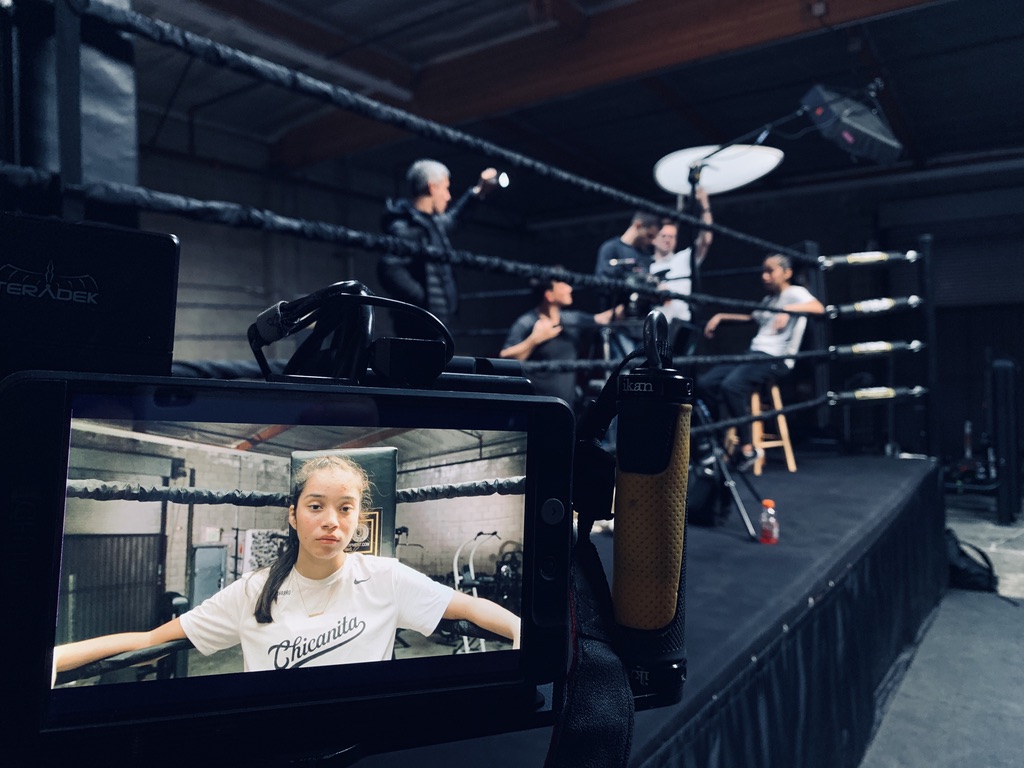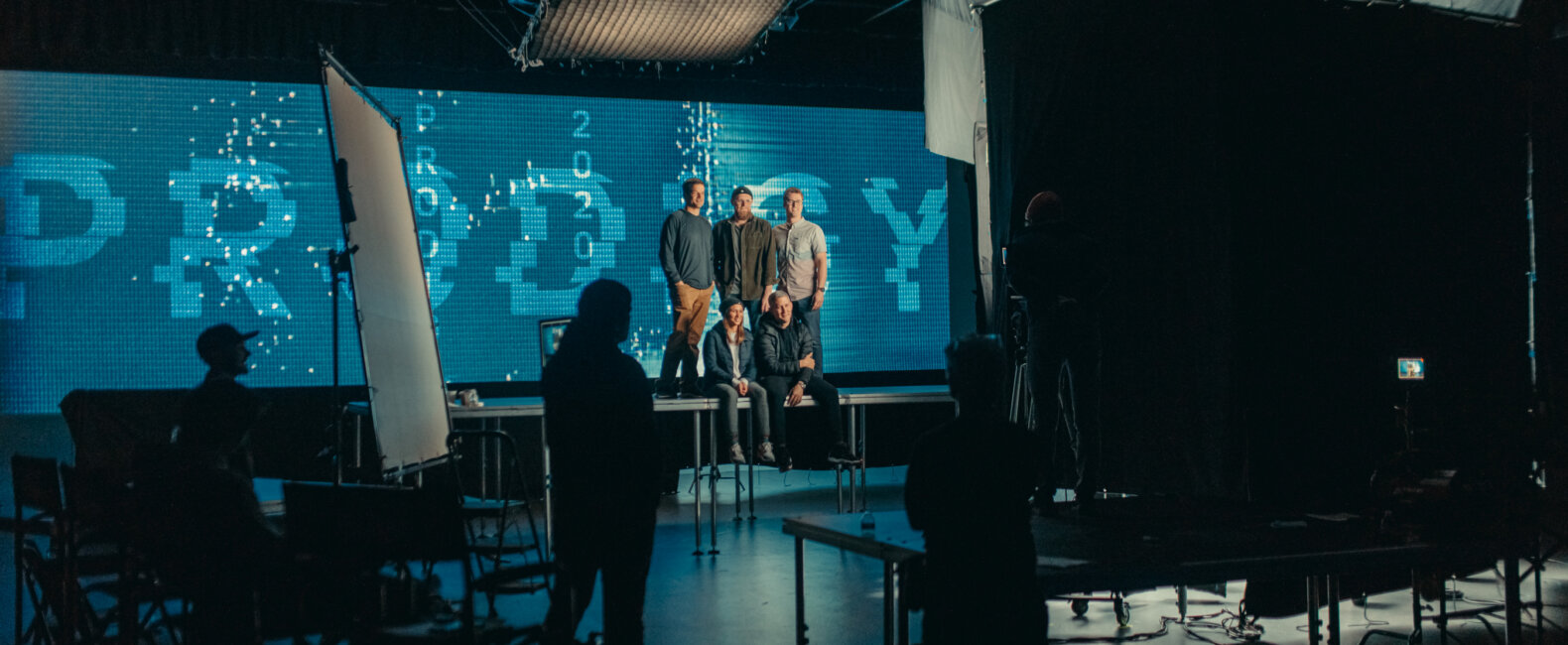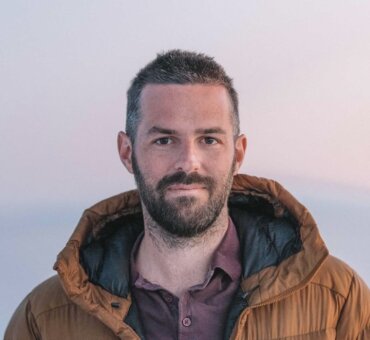In filmmaking, it’s really easy for a project not to make it off the ground. At the beginning of pre-production, there’s a laundry list of things that can make you stumble out of the gate, which makes the production of Park Stories’ 8 part docu-series Prodigy even more astonishing.
On paper, the idea is incredible. It’s an in-depth series exploring the best up-and-coming athletes under the age of 21. In reality, it’s still a great idea, but also a “gargantuan” undertaking as Executive Producer Rand Getlin puts it.
“It was a jigsaw puzzle. When you look at it, you’ve got all of these pieces on the board and some pieces are missing. When we started this, we had no athletes,” Rand told us. “When the series got green-lit, there was not a single athlete committed to the project. We landed all of these athletes while the train was moving.”
Their production was facing, just to name a few challenges: A brand-new streaming platform with Quibi, a three-month timeline to shoot 8 episodes, constantly evolving cast, and schedules that were all over the place. Yet, as you’ll see when you watch the series, they nailed it.
As Prodigy launches this week, we asked the team at Park Stories to reflect on the production, and just how exactly they managed to pull it off. Here’s Rand Getlin, Producer Janina Getlin, and Editor Lucas Harger on the production behind Quibi’s brand-new short film series, Prodigy.
Musicbed: Why launch Prodigy on Quibi?
Rand Getlin: When we started Park Stories, we knew there was a world in which short-form premium content, specifically profiles on elite athletes, would be incredibly valuable in the market. But when we started three years ago, there was no Quibi. There was no short-form platform that was doing hyper-premium content.
Once you get the green light, how do you begin to narrow down the list of athletes?
Rand Getlin: That’s where I’m a bit in a silo. That’s my responsibility. First and foremost, we need athletes who are truly world-class. For Prodigy, the series is eight of the best athletes in the world under the age of 21. But, we’re not saying they’re just good for their age group.
They need to be truly world-class, which means, for our series, the fastest woman in the history of swimming, the fastest woman in the history of the NCAA and track and field, the fastest man in the history of high school track and field, a guy who’s going to be the captain of the U.S. Men’s National Team in soccer, the number-one basketball player in the world, the number-one football player in the United States of America. We went after the absolute best of the best.
When looking at truly world-class athletes under the age of 21, we really only had a list of 40 athletes who could even conceivably be in the series. Then, you’re thinking, How incredible are they as people? How amazing are their stories? We really hit the proverbial jackpot on that front in terms of story, depth, and how dynamic these young athletes are.

How do you distill that list even further?
Rand Getlin: If an athlete is a number one in the world at whatever they do, if they’ve achieved things that most of us could only dream of, they probably have a pretty good story to tell. You know what I mean? It comes hand in hand. People don’t achieve incredible things that only .000001% of society can achieve without having an incredible story to tell.
Janina Getlin: At the same time it was extremely difficult and fluid. We were updating the roster the entire way through production because athletes are very taxed with media requests. So you have to fight, and you also have to guess and predict very well. I think what Quibi really appreciated about Rand’s sensibility was figuring out who was next because we had Zion Williamson when nobody was interested in Zion. Then, Zion became Zion. He did the same thing with Jalen Green, and now he’s number one in the country. Luckily, we were able to find a really good mix this year.
And, speaking as a woman, there are not a lot of opportunities for women to be highlighted in as high quality, cinematic productions as this. So, we went and found some of the most amazing female athletes and that was a huge highlight — to be able to get them wrapped into this series as well. The storytelling for girls is on par with the boys. It’s incredible.
Was the casting process similar to being a scout in all of these different sports?
Lucas Harger: That’s right. I was talking to somebody about the series and their response was, “This is such a great idea. Why hasn’t it been done before?” It hasn’t been done before because of this piece: being able to forecast who is number one in all of these areas, who is rising, and the talent recognition that goes into it.
Then, to combine that with the actual acquisition of a commitment, you know what I mean? There are all of the dominoes that have to be set up. The cornerstone of the entire project is the talent acquisition and understanding the landscapes of all of these different sports and then actually getting them to invest in the project and their story.
All of them are kids—and I’m sorry I’m calling them kids, but it’s intentional—and high schoolers aren’t always articulate. I’ve cut things with high schoolers before. Their interviews are usually pretty rough, but the kids in this series are so articulate about their current situation and about their emotional state, which from an editorial standpoint is massive. There’s the talent, but as Rand was saying, there’s also the emotional casting, if you will.

We’re just going to guess the production was intense.
Rand Getlin: It was eight athletes, two countries, 23 cities, seven states, and 52 days in production. [laughs]. Not counting travel. It was an absolutely gargantuan undertaking.
Janina Getlin: They green-lit the series at the end of July and we started production October 6. We were finished with production in January.
Lucas Harger: Three months.
Rand Getlin: Yeah, three months.
Lucas Harger: Three freaking months.
How did you adapt your production to all of these different athletes’ schedules?
Rand Getlin: We were living on airplanes, living in hotels, which is nothing new to people in production. But this was a different beast. All the athletes are different. Reagan Smith, for instance, her schedule does not change. She’s going to wake up at 4:30, be in the pool by 5:30. Jalen Green is a world class basketball player, so he’s playing tournaments in the Philippines, he’s playing in Greece, he’s playing all over the United States of America. We shot with him in South Carolina. We shot with him in Fresno. We shot with him in Napa.
You have to figure out ways to make yourself a part of their process. You don’t get to dictate to them what’s going on. Being a really lean production team helps a ton with that. It’s just me, Janina, [Director] Luke Korver, and our line producer Bryce Cyrier in the field. If we had a bigger crew, this would not work.
How do you manage to connect on a deeper level for such a fast production?
Rand Getlin: Janina is absolutely phenomenal, helping the families to realize how much we care and that we’re genuine people. We’re not just producers; it isn’t just business for us. But, she’s also really intelligent about dealing with people. So she dips out when it’s time for Luke and I to do our thing. She produces her ass off until it’s time to hand off to me and Luke. Then, she and Bryce disappear. All of our interviews are just me, Luke, and the athlete.
It becomes this very intimate thing where the athletes feel super comfortable sharing. They got into some very, very personal stuff. We’re going to give you insight into their soul and we failed if we did not. That’s it. You’ve got to understand their deepest, most important motivations.
That starts with us integrating ourselves into their lives, for five to six days at a time. It’s very intense. The bonds that we form are incredibly strong because we become members of their family for that week. We’re with them basically 24/7. We’re smart about it, of course. We give them breaks where they need them, but we spend a tremendous amount of time with parents, siblings, and other people in their family.
It was a jigsaw puzzle. When you look at it, you’ve got all of these pieces on the board and some pieces are missing. When we started this, we had no athletes. When the series got green-lit, there was not a single athlete committed to the project. We landed all of these athletes while the train was moving.
How do you plan for that?
Rand Getlin: We had to push forward with “maybes.” Planning the logistics for this thing was insane—the number of flight cancellation modifications, changes, getting into the US Olympic training center, getting into the big air competition in Atlanta. It’s a process. And it was all done while the train was in motion. That’s a true testament to the power of this team and the way we planned for everything.
Lucas Harger: You watch these episodes and think, Yeah, of course. That’s how it should be. You talk to all the people you need to talk to. You go to the events you need to go to. You experience this moment in this athlete’s life at the time that you need to experience it. The most seamlessly experienced films are the films that have the most intention, thought, and planning put into it.
You can see disorganization in a film, but you never notice organization. Every single pixel, every single shot, every single location, every single conversation needs to be perfect for you to think, Of course, that is how it should always be.




















































































